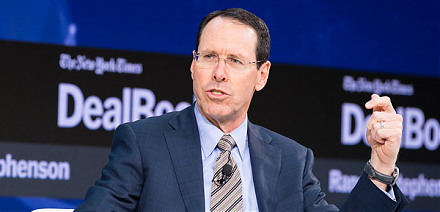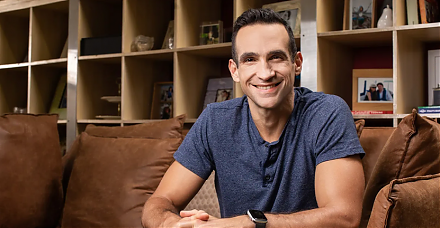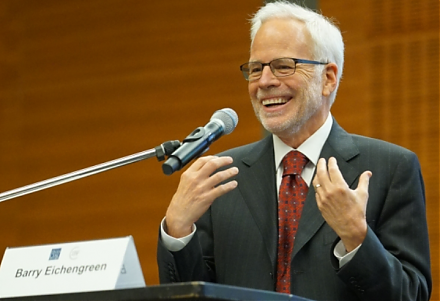

2020-04-24 11:33:00 Fri ET
fifth discipline proprietary assets customer-centric metrics flywheel okr team leaders founders senior managers eric schmidt growth rare resources reinvention disruptive innovation blue ocean sustainable profitability lean solutions jobs-to-be-done niche clayton christensen steve jobs andy grove elon musk mark zuckerberg
Disruptive innovations tend to contribute to business success in new blue-ocean markets after iterative continuous improvements.
Clayton Christensen and Michael Raynor (2003)
The innovator's solution: creating and sustaining successful growth
Senior executive managers typically cannot regard theories as tools for business success because these corporate decision-makers often fail to associate theories with practical applications. Clayton Christensen and Michael Raynor contend that many senior executive managers need to reconsider their views and perspectives on business management theories of disruptive innovations. In light of the pivotal solution to the primary dilemma of disruptive innovations, Christensen and Raynor offer real-world examples and business insights to help business leaders grow new blue-ocean markets with more predictable success.
Large well-run companies should strive to incubate disruptive innovations for better growth in new blue-ocean markets.
Most corporations cannot maintain exponential growth that translates into superior shareholder returns over a sustainable period of time. One of the main reasons for this lack of sustainable exponential growth is the fact that most companies cannot design simple, reliable, convenient, and cost-effective products or services for new business growth in blue-ocean markets. Christensen and Raynor suggest that big well-run companies should strive to incubate disruptive innovations for sustainable exponential growth across the less competitive blue-ocean industry spectrum. Key disruptive innovations can become predictable when business organizations focus on the core value drivers that reflect customer-centric demands (not just customers themselves). In this light, most companies should pay attention to customer tastes, beliefs, behaviors, and preferences (rather than the homogeneous characteristics of customer groups).
Christensen and Raynor conduct a survey study to show that incumbent business organizations often turn out to be the key victors in the prevalent circumstances of sustainable innovations, whereas, lean startups often tend to be the victors in the rare circumstances of disruptive innovations. Big well-run companies often cannot prioritize disruptive innovations over sustainable innovations in American business history. By definition, sustainable innovations improve the functional performance of extant products or services; in contrast, disruptive innovations may lead to worse product or service performance in the short run, but these disruptive tech advances result in several other advantages that can ultimately prove to be simpler, smaller, cheaper, and better in the long run.
The new blue-ocean markets for disruptive innovations are often too small for well-run companies to justify investing in most disruptive technological innovations. By the time the new markets become sufficiently large for well-run companies to find disruptive changes attractive for better firm expansion and profitability, some other lean startups and independent business organizations may have already captured substantial market dominance.
The distinct difference between sustainable and disruptive innovations is the target customer. The target customer for sustainable innovations is often a representative customer who wants high-tech products and services that perform better than most other similar alternatives available in the extant markets. In comparison, the target customer for disruptive innovations is often a new customer who prioritizes product design and performance over technical functionality. The major product design and performance metrics include simplicity, reliability, convenience, and intrinsic value. These other positive features and elements distinguish disruptive innovations from sustainable innovations, the latter of which emphasize functional out-performance over most other products and services available on the market.
Disruptive innovations are new technological advances that make simple, reliable, convenient, and cost-effective products and services available to new customers. These positive features and other inventive elements create less competitive blue-ocean markets for disruptive innovations. In American business history, disruptive technological advances sometimes upset and change the course of market trends (e.g. smart phones, tablets, electric cars, e-commerce platforms, and so forth).
Incumbent business organizations tend to focus on superior products and services. Indeed, these companies often strive to go up-market by providing better products and services. In comparison, key disruptors try to ferret out low-end niche markets. This asymmetric motivation draws a distinction between sustainable and disruptive innovations. This distinction helps define a major business watershed between big well-run incumbent companies and lean startups. Large well-run companies often choose to leverage sustainable innovations and positive incremental changes for steady shareholder returns; whereas, small and lean business organizations often strive to achieve technological breakthroughs for major disruption across the entire industry spectrum. (However, Christensen and Raynor decline to connect the core disruptive innovation theory to the Schumpeter notion of creative destruction).
Most companies should take time to understand why customers purchase products and services for practical uses. Specifically, customers hire particular products and services in order to accomplish jobs, tasks, and missions in a highly pragmatic way. For this reason, it is futile for most companies to fixate on the shallow qualities and characteristics of either most customers or products and services. Why customers buy products and services matters more than their external attributes.
Customer-centric demands and requirements often serve as the key specifications of disruptive innovations.
Customers who use extant products and services but are reluctant to pay premium prices for better alternatives available out there are the ideal target customers for low-end disruption. It is difficult to identify the representative target customers for disruptive innovations in the new and less competitive blue ocean markets. In order to identify these target customers, senior corporate decision-makers often need to determine whether some customers have been unable to accomplish specific jobs, tasks, and missions as these customers cannot adopt simple, reliable, convenient, and cost-effective solutions. Sometimes disruptors need to offer discounts in order to attract a critical mass of early technology adopters for better shareholder returns. Senior corporate leaders often need to evaluate whether the target customers are likely to compare the potentially disruptive products to the extant products available in the marketplace. It is quite plausible for key customers to buy the new disruptive products even if their initial versions are not as good as the extant products in the same market. In this case, price can be a major product selection criterion.
In the longer run, disruptive technological advances can often turn out to be simple, reliable, convenient, and cost-effective. These disruptive innovations can become better alternatives than sustainable tech advances and other extant products and services available in the same markets. From time to time, disruptive innovations may help build brand-new value networks. Apple iOS, Google Android, Microsoft Office, Facebook and its mobile app suites Instagram and WhatsApp, and Amazon e-commerce for most retail items etc are good examples of new network platform ecosystems. These disruptive innovations turn out to be critical game-changers in the core value networks of Internet search, software, mobile communication, social media, and e-commerce.
In a traditional business fashion, most companies identify their core competencies, perform these functions in-house, and then outsource the residual functions. The main problem with this old school of management science is the prevalent pattern that some specific non-core functions today may transform into core competencies tomorrow in both critical and proprietary ways. For this reason, many corporations need to undertake a major dual transformation. On the one hand, these companies should focus on applying proprietary methods to perform the vast majority of critical functions in-house. On the other hand, the same companies should keep overhead costs low by outsourcing some non-core business functions. As these companies phase out a major dual transformation, new proprietary methods help perform the most critical business functions in-house in a more efficient manner when the core business resources, processes, and values help perform at least some of the non-core business functions in a more cost-effective way. This dual transformation can help incubate hybrid disruptive innovations through the typical business lifecycle.
This dual transformation can be a major challenge for many companies to manage this transition if their customers locate in multiple tiers across the industry spectrum. In response to this major challenge, most corporations should strive to pursue new customers in both the higher and lower tiers of the same industry. In practice, it is difficult to run multiple business units if they differ a lot in terms of costs, niche tiers, fast and flexible proprietary business operations, and third-party service providers.
Commoditization makes most companies unable to capture profits due to weaker product and service differentiation. In effect, de-commoditization empowers many companies to earn greater net income streams due to strong brand differentiation. Because de-commoditization is often a reciprocal process, many companies need to emphasize disruptive innovations for superior product and service differentiation in response to structural shocks and changes in the corporate value chain.
Small and lean independent business organizations should implement core values, processes, and resources to help design disruptive innovations.
Christensen and Raynor recommend the RPV (resources, processes, and values) framework for helping high-tech companies incubate disruptive innovations. In this framework, resources include people, prototypes, tech instruments, brands, cash funds, and corporate relations with employees, customers, suppliers, distributors, debtors, shareholders, and other prospective investors etc. Resources are visible, measurable, flexible, and can be built, bought, and sold etc. The resource decision that most often trips up many companies involves choosing middle management.
Processes are organizational structures and blueprints that transform factor inputs into products and services for better customer value creation. This transformation boils down to the key proprietary business processes that contribute to shareholder wealth maximization. Meanwhile, these business processes often need to account for stakeholder value maximization too. Core stakeholders can include employees, customers, suppliers, distributors, bondholders, shareholders, financial institutions, and other venture capital investors etc. In the Christensen-Raynor RPV framework, key business processes include product development cycles, proprietary product design feedback loops, procurement methods, market research reports, budgets, employee compensation schemes, talent retention roadmaps, business continuity plans, and other internal services.
Values are the norms, standards, and principles that steer key business operations in lean well-run enterprises. Business values create human capital boundaries (i.e. what most companies can and cannot attempt to accomplish in due time). In most successful companies, corporate values typically evolve in a predictable manner. For instance, Warren Buffett developed the Berkshire Hathaway stock portfolio on the primary basis of the stock investment principles that he had learned at Graham-Newman Corporation and Columbia Business School. As a primary senior partner at Goldman Sachs, John Whitehead built revolutionary business principles that led the investment bank through the peaks and troughs of the American real business cycle. Whitehead drew from his valuable experiences of World War II and Harvard Business School to nurture these timeless business principles for Goldman Sachs.
In the Google triumvirate management culture, Eric Schmidt became the CEO to manage the vice presidents, sales teams, and so forth as Larry Page and Sergey Brin became co-presidents to hone the creative side of the online search business with myriad software services. Schmidt handled almost all of the key direct reports, business operations, and investor relations, and Brin and Page had final say on all major business decisions.
Mark Zuckerberg and his business co-founders focused on building the best social media website Facebook with its subsequent successful acquisitions of Instagram, WhatsApp, and Oculus VR etc. The social media titan only became profitable when Zuckerberg recruited as COO Sheryl Sandberg who leveraged her experiences of digital ad sales at Google and public affairs and fiscal policies as the Chief of Staff of Treasury Secretary Lawrence Summers.
At Apple, Steve Jobs focused on creative mobile device design and holistic product development. At SpaceX and Tesla, Elon Musk had to make many tough business decisions by drawing from his rare but invaluable experience of both personal and professional crises. At Intel, Andy Grove summed up tech business management in terms of both simple and useful OKRs (objectives and key results). Later OKRs influenced many other high-tech companies such as Google, LinkedIn, Twitter, and Uber etc in an important way.
Business capabilities typically move from lean startup resources to core functional processes and values for sustainable success and growth. In order to sustain long-run business growth, lean enterprises should focus on starting early, starting small, and requiring early success. Starting early suggests that most companies should consistently create new ventures even if the current core business remains healthy. Starting small means separating business units in such a way that it is possible to maintain patience for business growth. Demanding early success means that most companies should minimize the irrational subsidization of new and risky high-tech business ventures.
To establish the business growth engine of disruptive innovations, most companies should pull together major business operations, processes, and team members to incubate disruptive technological advances. As these companies accelerate their disruptive product development cycles, senior leaders should focus on bottom-up emergent strategy development to put the right people in the right positions at the right times (in contrast to top-down deliberate strategy development). This strategy development evolves from day-to-day priorities, capital investment decisions, and internal cost structures etc for senior decision-makers to handle new opportunities, risks, and threats. One approach cannot fit all scenarios, and blind replication may not work well in practice.
Senior executive managers typically cannot regard theories as tools for business success because these corporate decision-makers often fail to associate theories with practical applications. Clayton Christensen and Michael Raynor contend that many senior executive managers need to reconsider their views and perspectives on business management theories of disruptive innovations. In light of the pivotal solution to the primary dilemma of disruptive innovations, Christensen and Raynor offer real-world examples and business insights to help business leaders grow new blue-ocean markets with more predictable success.
Christensen suggests that business management science can be the most noble of professions in practice. No other occupation offers the opportunity to help others learn-and-grow from their past mistakes, failures, and groupthink experiences. Key management lessons empower individual team members to take responsibility for their efforts. Senior leaders, middle managers, and individual contributors receive recognition for achievement. All of these team members contribute to the collective wisdom of business management in practice. Every person needs to figure out his or her life purpose. Clarity about this life purpose can trump knowledge of work-life balance, core competence, disruptive innovation, competitive strategy, and so on. Good manners and behaviors flow from high levels of humility and self-esteem. In essence, Christensen leaves a long-term legacy of faith, integrity, and commitment. We measure our lives in terms of how many people we enlighten, encourage, build up, and help out in rare times of severe stress.
This analytic essay cannot constitute any form of financial advice, analyst opinion, recommendation, or endorsement. We refrain from engaging in financial advisory services, and we seek to offer our analytic insights into the latest economic trends, stock market topics, investment memes, personal finance tools, and other self-help inspirations. Our proprietary alpha investment algorithmic system helps enrich our AYA fintech network platform as a new social community for stock market investors: https://ayafintech.network.
We share and circulate these informative posts and essays with hyperlinks through our blogs, podcasts, emails, social media channels, and patent specifications. Our goal is to help promote better financial literacy, inclusion, and freedom of the global general public. While we make a conscious effort to optimize our global reach, this optimization retains our current focus on the American stock market.
This free ebook, AYA Analytica, shares new economic insights, investment memes, and stock portfolio strategies through both blog posts and patent specifications on our AYA fintech network platform. AYA fintech network platform is every investor's social toolkit for profitable investment management. We can help empower stock market investors through technology, education, and social integration.
We hope you enjoy the substantive content of this essay! AYA!
Andy Yeh
Chief Financial Architect (CFA) and Financial Risk Manager (FRM)
Brass Ring International Density Enterprise (BRIDE) © 2013-2023
Do you find it difficult to beat the long-term average 11% stock market return?
It took us 20+ years to design a new profitable algorithmic asset investment model and its attendant proprietary software technology with fintech patent protection in 2+ years. AYA fintech network platform serves as everyone's first aid for his or her personal stock investment portfolio. Our proprietary software technology allows each investor to leverage fintech intelligence and information without exorbitant time commitment. Our dynamic conditional alpha analysis boosts the typical win rate from 70% to 90%+.
Our new alpha model empowers members to be a wiser stock market investor with profitable alpha signals! The proprietary quantitative analysis applies the collective wisdom of Warren Buffett, George Soros, Carl Icahn, Mark Cuban, Tony Robbins, and Nobel Laureates in finance such as Robert Engle, Eugene Fama, Lars Hansen, Robert Lucas, Robert Merton, Edward Prescott, Thomas Sargent, William Sharpe, Robert Shiller, and Christopher Sims.
Follow AYA Analytica financial health memo (FHM) podcast channel on YouTube: https://www.youtube.com/channel/UCvntmnacYyCmVyQ-c_qjyyQ
Follow our Brass Ring Facebook to learn more about the latest financial news and fantastic stock investment ideas: http://www.facebook.com/brassring2013.
Free signup for stock signals: https://ayafintech.network
Mission on profitable signals: https://ayafintech.network/mission.php
Model technical descriptions: https://ayafintech.network/model.php
Blog on stock alpha signals: https://ayafintech.network/blog.php
Freemium base pricing plans: https://ayafintech.network/freemium.php
Signup for periodic updates: https://ayafintech.network/signup.php
Login for freemium benefits: https://ayafintech.network/login.php
If any of our AYA Analytica financial health memos (FHM), blog posts, ebooks, newsletters, and notifications etc, or any other form of online content curation, involves potential copyright concerns, please feel free to contact us at service@ayafintech.network so that we can remove relevant content in response to any such request within a reasonable time frame.
2018-06-07 10:36:00 Thursday ET

AT&T wins court approval to take over Time Warner with a trademark $85 billion bid despite the Trump administration prior dissent due to antitrust conce
2018-05-19 09:29:00 Saturday ET

Treasury Secretary Steve Mnuchin indicates that the Trump team puts the trade war with China on hold. The interim suspension of U.S. tariffs should offer in
2018-02-27 09:35:00 Tuesday ET

Fed's new chairman Jerome Powell testifies before Congress for the first time. He vows to prevent price instability for U.S. consumers, firms, and finan
2024-03-19 03:35:58 Tuesday ET

U.S. presidential election: a re-match between Biden and Trump in November 2024 We delve into the 5 major economic themes of the U.S. presidential electi
2025-07-26 09:26:00 Saturday ET

Nir Eyal and Ryan Hoover explain why keystone habits lead us to purchase products, goods, and services in our lives. The Hooked Model can help shine new lig
2023-03-21 11:28:00 Tuesday ET

Barry Eichengreen compares the Great Depression of the 1930s and the Great Recession as historical episodes of economic woes. Barry Eichengreen (2016)